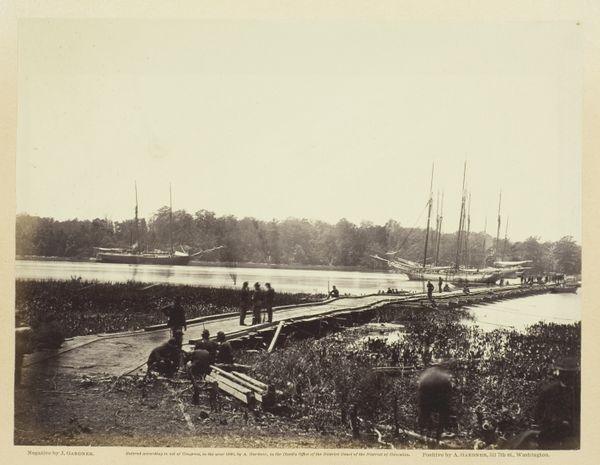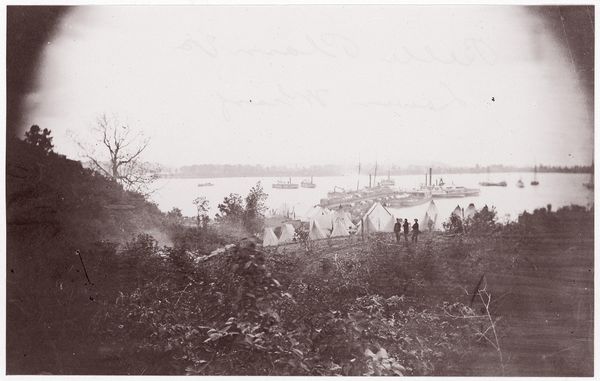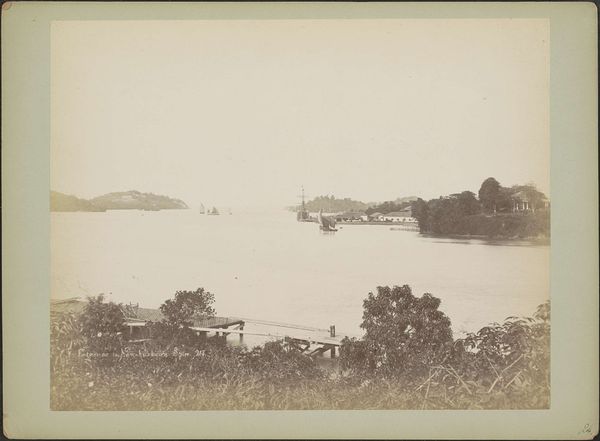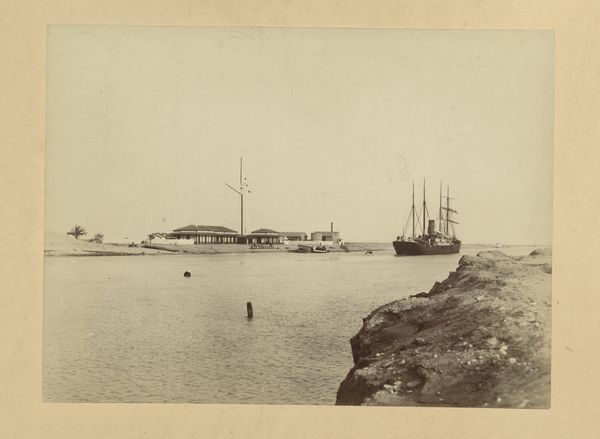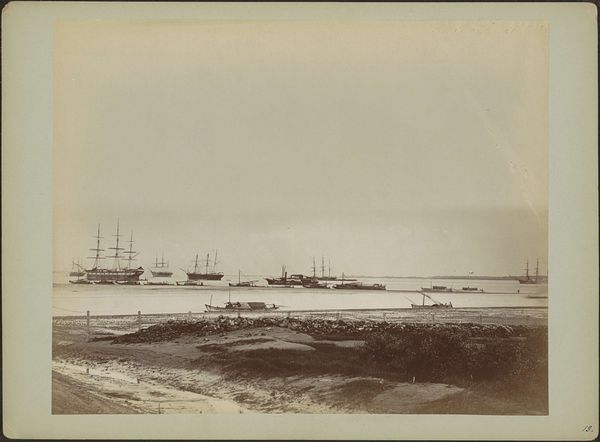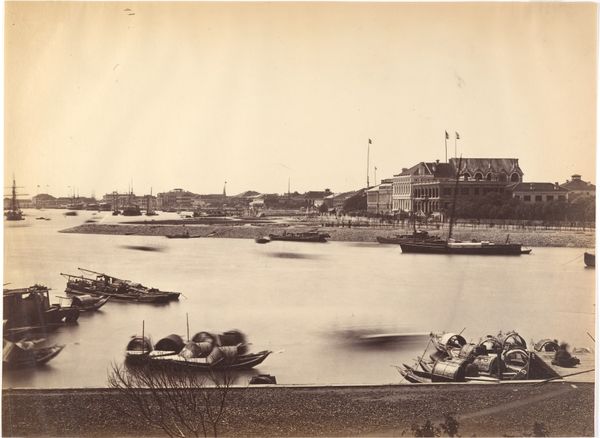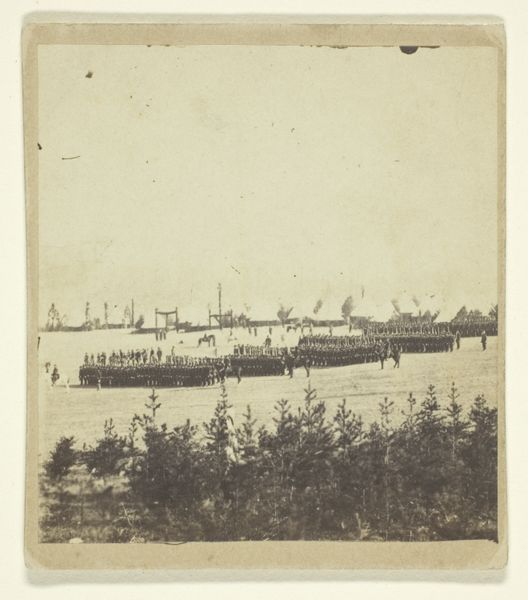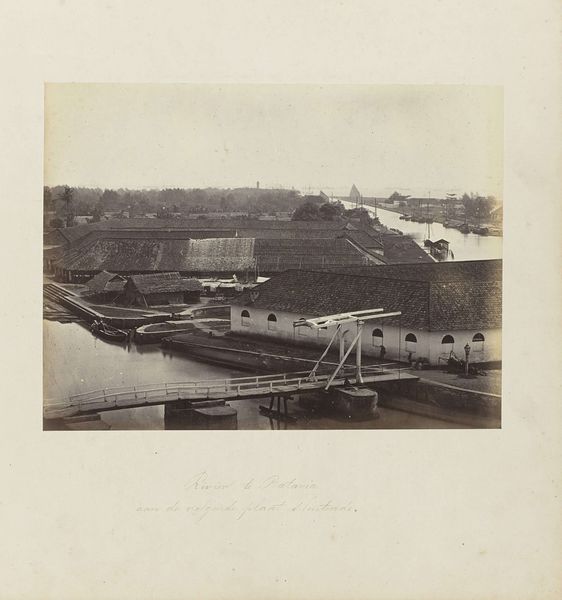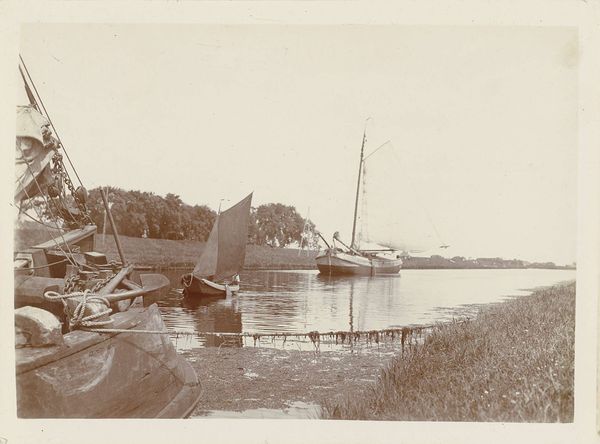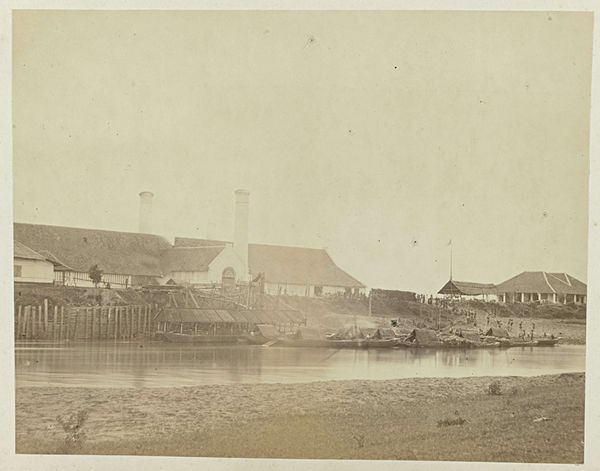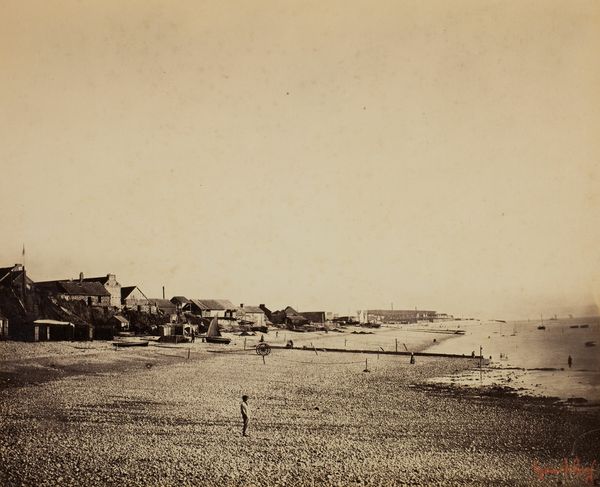
print, photography, gelatin-silver-print
#
16_19th-century
# print
#
war
#
landscape
#
photography
#
historical photography
#
gelatin-silver-print
#
hudson-river-school
#
united-states
#
cityscape
Dimensions: 17.8 × 23 cm (image/paper); 31.1 × 44 cm (album page)
Copyright: Public Domain
Curator: At first glance, it’s just a calm, neutral harbor scene, a bit melancholy even. It’s a quiet stillness. Editor: Precisely. What we're seeing is a gelatin-silver print dating back to 1865, entitled "Medical Supply Boat, Appomattox Landing, Virginia". It's attributed to John Reekie, though likely part of a larger project overseen by Alexander Gardner during and after the American Civil War. It's held at the Art Institute of Chicago. Curator: The steamboats are the main focus, and in them I see a sense of both hope and weariness. One ship, the "Planter", looks almost celebratory in name, a promise of regrowth. Editor: It's intriguing that you picked up on that so directly. The iconography of maritime vessels has a long and complex association with trade, travel, and more importantly, with military operations and logistics in times of war. Medical supply boats like this were a lifeline during the Civil War, delivering crucial aid. The location is itself important, Appomattox. Curator: Yes! Appomattox Landing; now it speaks much louder. Knowing it depicts the arrival of medical supplies after a major conflict imbues it with so much meaning. I am drawn to the lone figure on the bank. Editor: Note the way this seemingly innocuous image carries considerable symbolic weight given the period it comes from. Consider too, the political agenda underscoring how such images were strategically made and disseminated during the Reconstruction era. They were not neutral documents. Curator: The very muted tones almost disguise the gravity of the situation, offering instead a serene image. This calmness perhaps also spoke to a desired, longed for return to normalcy. The human figure emphasizes our human connection, both individually and collectively. Editor: Looking at it today prompts considerations of how images of aid, recovery and war persist in collective memory. Photography in its infancy was becoming a potent tool of documentation but also, propaganda. The Hudson River school aesthetic employed in portraying the landscape speaks to this very effect. Curator: So it's an incredibly powerful image, once you unpack the historical and psychological baggage. Editor: It certainly gives you pause, doesn't it? The quietude serves as a subtle reminder of the enduring human consequences of war.
Comments
No comments
Be the first to comment and join the conversation on the ultimate creative platform.
